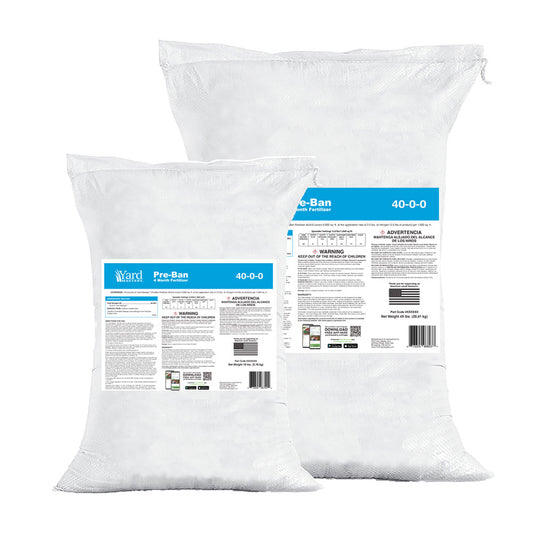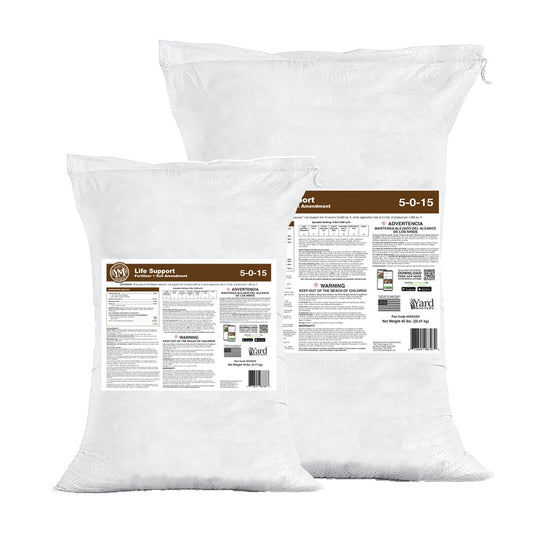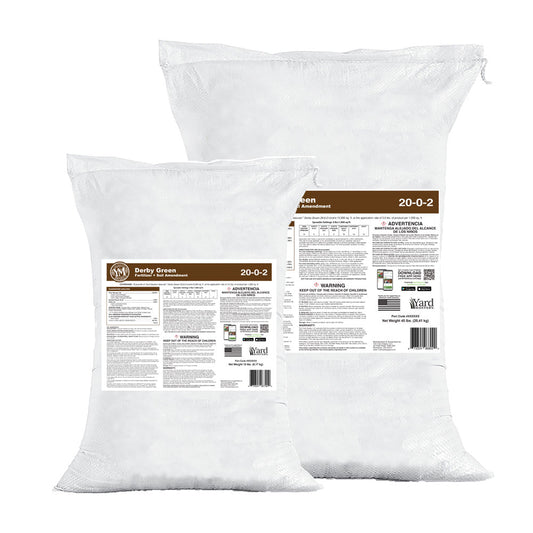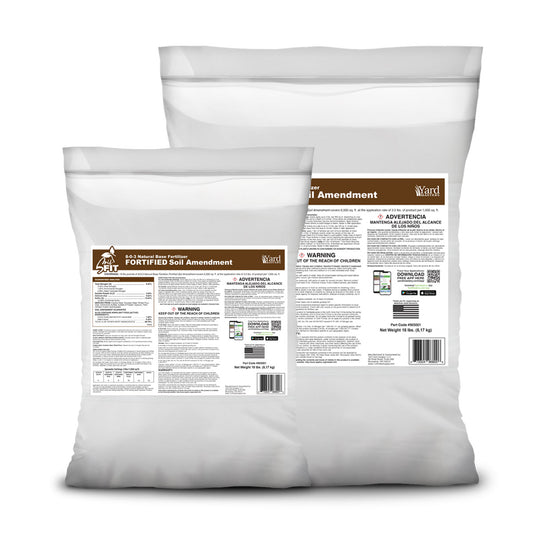Hans, Franz, and A Tale Of Two Turgid Lawns - What To Throw Down Right Now
“Hey Allyn, I recently relocated from Northern Illinois where I had a beautiful cool season lawn down here to Texas where I have St Augustine grass and I find that almost nothing I’ve learned translates. It’s like starting all over, can you help me understand why this is?” - Don L, Houston
This question presents an opportunity for us all to learn something. I hear it often and so today I’m going to talk you through why things are so different, and then help you set a path forward. Good news is, the one thing we all have in common right now is time.
There is still plenty of time for your to make positive headway in your lawn, no matter what grass type you have. As usual, I encourage you to read this entire email no matter what your grass type. I run through some math and fun science this week that will be good learning for you even if you don’t follow any of my advice below. I also secretly hope that you will get a chuckle at my analogies and they may help shed light on a few of the concepts as well.
But first:
For those of you with cool season turf who have aerated and overseeded and are wondering about when you can mow the lawn -- this podcast will answer all your questions:
Ok now let’s get down to the business of improving your lawn’s turgidity. Yes that’s what I said: Turgid lawns. That’s what we are after here and fall time is turgid time -- let’s start with our cool season friends.
Cool Season Fall Growth
Kentucky Bluegrass, Perennial Rye and fescue (including Turf Type Tall Fescue) all like to push down more roots and in turn grow more leaf surface in spring and fall. This is when temperatures are ideal for their production. It’s also when there is more moisture and less scorching heat.

These are also the times that we, as suburban lawn farmers, should be encouraging and pushing that natural growth cycle by feeding the turf what it needs to do more of what it already is doing naturally. In other words, it wants to get swolled, let’s be an encouragement to it!
Even if you are not aerating and seeding your cool season turf, you can still help it push more roots and thicken up before winter. This is especially important if your lawn struggled with heat stress, drought stress, disease pressure or insect pressure during the summer.
Fall is a great time to get back any gains that may have been lost with this brutal summer we just came out of. If summer left your lawn dried up, shriveled and weak, fall is a time to pump it back up. Here’s how to proceed.
Feed The Lawn, Prevent the Weeds
Let’s talk first about the feeding. Your job is to get down nitrogen and potassium and pack them in from now until after Thanksgiving (or until your ground freezes).
There are 3 numbers on the fertilizer bag and they represent the macro-nutrients the lawn needs in the greatest quantities: N-P-K - Nitrogen, Phosphorous and Potassium (Potash) - For this plan, we want to focus on the N and K.
Nitrogen: makes the grass grow more blades which can grab sunlight for photosynthesis. If you look at that graphic again up there you will see that cool season turfgrass naturally triggers a growth spurt in fall. Let’s take advantage of that, and in fact, let’s encourage it with Nitrogen.
What makes the grass grow?
Nitrogen! Nitrogen! Nitrogen!
What do we do to make it stronger?
Mow! Mow! Mow!
(sorry for the bad analogy from Full Metal Jacket)
In a way, it is like a war though, taking ground, filling in bare spots, and our days are numbered for this particular season. Actual daylight hours are shorter and shorter now, and there is more cloud cover during the day so you want to be sure you are mowing your lawn tall during these days. Give every bit of leaf surface a chance to work.
You should still be mowing every 3-4 days if you can (or weekly if that is all you can handle) but definitely be cutting tall. Most of you won’t need to water anymore but if you do, water deep and infrequent.
For those of you who want the more scientific side of the nitrogen push, one of it’s main jobs is to directly involve itself in the creation of chlorophyll. Chlorophyll is what makes grass green. Remember the magic of photosynthesis from your science classes in school?
Nitrogen is one of the key motivators of the process. Plus, it’s just a cool element anyway. It’s responsible for amino acid production and aminos are the building blocks of proteins. In fact, nitrogen works in our own bodies in a similar way, just without the chlorophyll piece.
Potassium: helps grass plants recover from summer stresses. If your lawn struggled in summer, you want to be adding potash into your mix to support the nitrogen pushing growth.
That’s because another cool thing about potassium is that helps maintain turgor pressure within the cells of the grass plant.
Balanced and sustained turgor pressure will make your lawn stand up tall and proud, literally. Think of potash (along with adequate irrigation) as a way of “pumping up” your lawn a little. This is important because the nitrogen is pushing top growth so the potash can literally help support it. 
Nitrogen and Potassium are here to Pump You Up!
Since it’s fall time and we are getting more moisture (the other important element in this equation) then we have a real opportunity to pump the grass plants up.
Your Fall Formula
Summary: Nitrogen pushes more top growth, frequent mowing encourages more rooting. Potassium along with proper amounts of water creates a balance in turgor pressure which encourages those blades to stand up tall and proud where they can grab more sunlight.
The result is a visibly thicker, healthier turf-stand that you will notice in 45 days or so if you follow the formula. Even if your lawn is thin and weak, you can see a difference inside of 45 days without aeration or overseeding.
Cool Season Recommended Applications (for those not seeding)
24-0-4 CarbonX Professional Fertilizer
3lbs/1000 anytime in September - right on top of the dithiopyr is ok
(these are two separate applications applied on the same day - don’t mix together)
Step 2 - 24-0-4 Carbon X Professional Fertilizer
3lbs/1000 anytime in October - about 4 weeks after the previous application
Step 3 - 24-0-4 CarbonX Professional Fertilizer - as your winterizer
4-5lbs/1000 a couple weeks before your ground freezes. Right around Thanksgiving or early-mid-December is a good target for most of you.
Note: do not apply CarbonX to wet turf. Water it in within a couple days of application, sooner the better.
Don’t Get Sticker Shocked - Here’s The Math
0-0-20 Dithiopyr - Cost for a 5,000 sq ft lawn using this product is:
50lb bag - $64.99
Application rate - 4lbs/1000 sq ft
Bag Covers - 12,500 sq ft
Cost per 1,000 - $5.19
Cost Per Application 5,000 sq ft lawn: $25.99
If you have a 5,000 sq ft lawn, you will get 2.5 applications from one bag - enough for fall and next spring. Remember: any leftover Dithiopyr can be used the following spring to prevent crabgrass and the added potash will be good then too!
24-0-4 CarbonX - Cost for a 5,000 sq ft lawn using this product is:
50lb bag - $64.99
Application rate - 3lbs/1000 sq ft (delivers .72lbs/N/1000)
Bag Covers - 16,600 sq ft
Cost per 1,000 - $3.92
Cost Per Application 5,000 sq ft lawn: $19.60
If you have a 5,000 sq ft lawn, you will get 3.3 applications from one bag - enough to carry you for the fall time.
In fact, if you are just starting out (and have a 5,000 sq ft lawn) then you can get your lawn looking pretty darn good with this strategy here above - and the cost would be under $100 plus you’d have your crabgrass preventative (the dithiopyr) all taken care of for next year already too.
Much cheaper than Trugreen when you look at it that way right?
Now, if you are a beginner and not comfortable with throwing down high nitrogen fertilizers, then you can use 8-1-8 XGRN which is my current favorite fert in our lineup. Instead of CarbonX, apply the XGRN at 5lbs/1000 for each application. You’ll still have very good results, albeit maybe not as dramatic at first, but you will have an easier time since the prill size is very small and it’s loaded with more potash and micros.
Lots of ways to choose a fun adventure here in the fall time for your cool season lawn. Remember, push it, and pump it up! Bio-Stimulants are also ok for use within and around any of these applications.
Warm Season Fall Growth
Now you friends with warm season turf such as Bermudagrass, St Augustinegrass, Zoysia, Centipede or bahiiiiiiagrass have a much different approach here in the fall for sure, but we still want to pump things up, just in a different way.
Let’s start out by looking at your growth calendar because it’s completely different than our cool season cousins:
Our grasses are a little more methodical in their approach, simpler too. This is because we have a much longer growing season and in fact, in areas where the ground doesn’t freeze, the “growing season” is year round. Let’s think about that for a minute.
Even though your turfgrass goes dormant (turns brown) once outside temps dip below 50F, there are always weeds and problem grasses that are adapted to grow at lower temperatures.
So let’s get a level-set there first and realize: If you have warm season turf, you should probably start looking at your lawn as a year-round endeavor, even if you are not mowing in January, you still will want to patrol and hand pick the weeds that like to take ground in winter. If your ground doesn’t freeze, you also still need to keep your lawn watered! Yes you do: helps keep it turgid and healthy even if it doesn’t show it, your lawn knows it.
Our approach going into fall is this.
Descending Nitrogen, High Potash, Bio-Stimulated Winter Watering
Warm season lawns are all a little different so we are going to zero in here on the soil temperature aspect of things. If you need a soil thermometer, get one cheap here. (works good for steaks on the grill too)
Warm Season Recommended Applications
Step One - 0-0-20 Dithiopyr PLUS Potash as soil temps approach 70F
4lbs/1000 sq ft - this will give you 4 months protection from winter weeds and .8lbs Potash to help with summer stress recovery and over-winter health.
24-0-4 CarbonX Professional Fertilizer
3lbs/1000 sq ft same day as you apply the dithiopyr.
-or-
8-1-8 XGRN Professional Fertilizer
5lbs/1000 sq ft same day as you apply the dithiopyr.
Step Two - 0-0-20 Dithiopyr PLUS Potash - as soil temps fall to 55F
4lbs/1000 sq ft - this will double up on your previous application and extend you through the following spring as well as give you plenty more potash to keep the turf strong through winter.
Step 3 - Bio-Stimulants - Apply anything from the Bio-Stimulant pack as long as the ground is not frozen.
We don’t want to apply too much nitrogen to warm season turf in the fall time when soil temps dip under 70F - this can lead to some problems the following spring, but you can apply micronutrients, potash and bio-stimulants. In fact, Bio-stimulants and micros are highly recommended at anytime the soil isn’t frozen. For some of you that could be year round.
If you want to keep your warm season lawn double-dark green throughout the fall, use MicroGreene at 6oz/1000 every few weeks. Feel free to apply Air8 and Humic12 to keep the soil oxygenated and RGS can be used to stimulate healthy growth of rhizomes and stolons.
7-0-0 Greene Effect is also ok to use as it’s low N will not cause any problems but can extend your color pop longer into the fall.
Fall Irrigation
Ongoing, throughout the later fall when soil temps hover in the lower 50s and high 40s, even if your turf is dormant (which it will be) realize the soil and the grass crowns are still operating, albeit slowly. We do not want the lawn to dry out from wind as this can cause areas to completely die. The potash you added will help keep things turgid, but you need to supply the water to the equation if you don’t get rain.
One good, deep soaking every 10 days will be fine. Just make sure there is no freeze or frost in the forecast. If temps are slated to get too much below 40F, stop the watering.
Of course, if you live somewhere that the ground freezes, you won’t have to be concerned about this as much but you may consider watering later into the fall than normal, and start your watering earlier in the spring than normal. I’ll be sure to talk more about this as time goes on.
Conclusion
Lots to unpack here, I realize that. If you want to get more detailed updates as well as join in on the fun with other Lawn Care Nuts on Facebook, pick up my hybrid organic lawn plan. Get your Cool Season Lawn Plan Here - it comes with a full fall time supplement guide to expound on everything I mentioned above and gives you free access to my Facebook group that is for those who want to share their results from using the plan, as well as ask questions around it.
Get your Warm Season Lawn Care Plan Here. I’m in the process of writing a fall update for you too, which will be sent to you free if you have the guide. It also expounds on what I have provided above. You also get access to the FaceBook group to get your questions answered by my trained staff, as well as other LCNs who have been where you are now.
The key to all of this is to know that the work you do now, will surely set you up for success in the early spring season of 2020 to come. It’s never to late to get your lawn pumped up, but right now, since you made it to the end of this email - that tells me that NOW is the time for you to take action!
I’ll see you in the lawn!
AL






